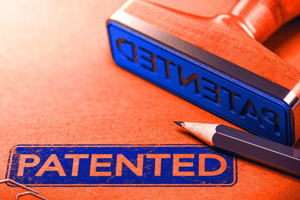Meaning of a Patent
It is the exclusive right granted by a sovereign agency for an invention. It could be for a product or a process that provides a novel way of doing anything that offers a solution to the problem. However, to get a patent, technical information or the process of the invention must be disclosed in the patent application.
Who can or cannot use the information or the product/process is at the discretion of the patent owner. He/She could give permission or license any other party to use it in exchange for money or even sell the right to someone else.
Types of Patents
A patent can be anything ranging from the design of the airplane to a nano-chip that is considered as an invention using scientific methods. There are generally three types of patents that cover most of the things under the sun.
- Utility Patents: Anyone who invents a new process or a product that can be used in its totality or partially.
- Design Patents: It includes an original, authentic and new design for a product or a process.
- Plant Patents: Anyone producing, discovering or inventing a new plant that is capable of reproduction.
Apart from that, patents can be granted for inventions in any field of technology. It could be a chemical compound or an element that makes a particular chemical compound that is patented. For example, the minicomputers launched by Apple were patented under the firm’s name. A patent can involve any one thing in particular or hundreds of inventions bundled together.
How long can a patent last?
Usually, a patent expires after 20 years of its invention. This means that anyone can use the invention without infringing on the rights of the patent owner. Once the patent expires, the protected rights of the owner end and the invention enters the public domain. Patents are also considered to be territorial rights. This means that the patent cannot be exploited in the country or nation where it has been filed.
The usefulness of Patents in society
From electric lighting (Edison and Swan), Plastic (Baekeland), to ballpoint pens (Biro) and microprocessors (Intel), the patented inventions have dominated every phase of human life. They provide incentives to the companies involved in their research. Because the knowledge required to research on patented things can be huge. For example, the nanochips invented by scientists at Intel required enormous capital and state-of-the-art laboratories.
If any company could duplicate the nanochips to develop their own products, there would not have been any incentive for Intel to make the research possible, let alone, desirable. Had it not been for patents and the attached benefits, companies would make the inventions a secret or not encouraging it at all. In this way, patents encourage people to invent innovatively all the while providing solutions to society at large. To maintain the best average and balance between the exploitation at the behest of inventing new things and getting rewarded, 20 years limit plays a very crucial role, after which, the said invention is free for anyone to use.
It is the exclusive right granted by a sovereign agency for an invention. It could be for a product or a process that provides a novel way of doing anything that offers a solution to the problem.
There are generally three types of patents namely: 1. Utility Patents: Anyone who invents a new process or a product that can be used in its totality or partially. 2. Design Patents: It includes an original, authentic and new design for a product or a process. 3. Plant Patents: Anyone producing, discovering or inventing a new plant that is capable of reproduction.
Usually, a patent expires after 20 years of its invention. This means that anyone can use the invention without infringing on the rights of the patent owner. Once the patent expires, the protected rights of the owner end and the invention enters the public domain.
Anybody can patent any new invention which does not already exist.
What is a Patent?
What are the types of patents?
What is the validity duration of a patent?
Who is eligible to register a Patent?




